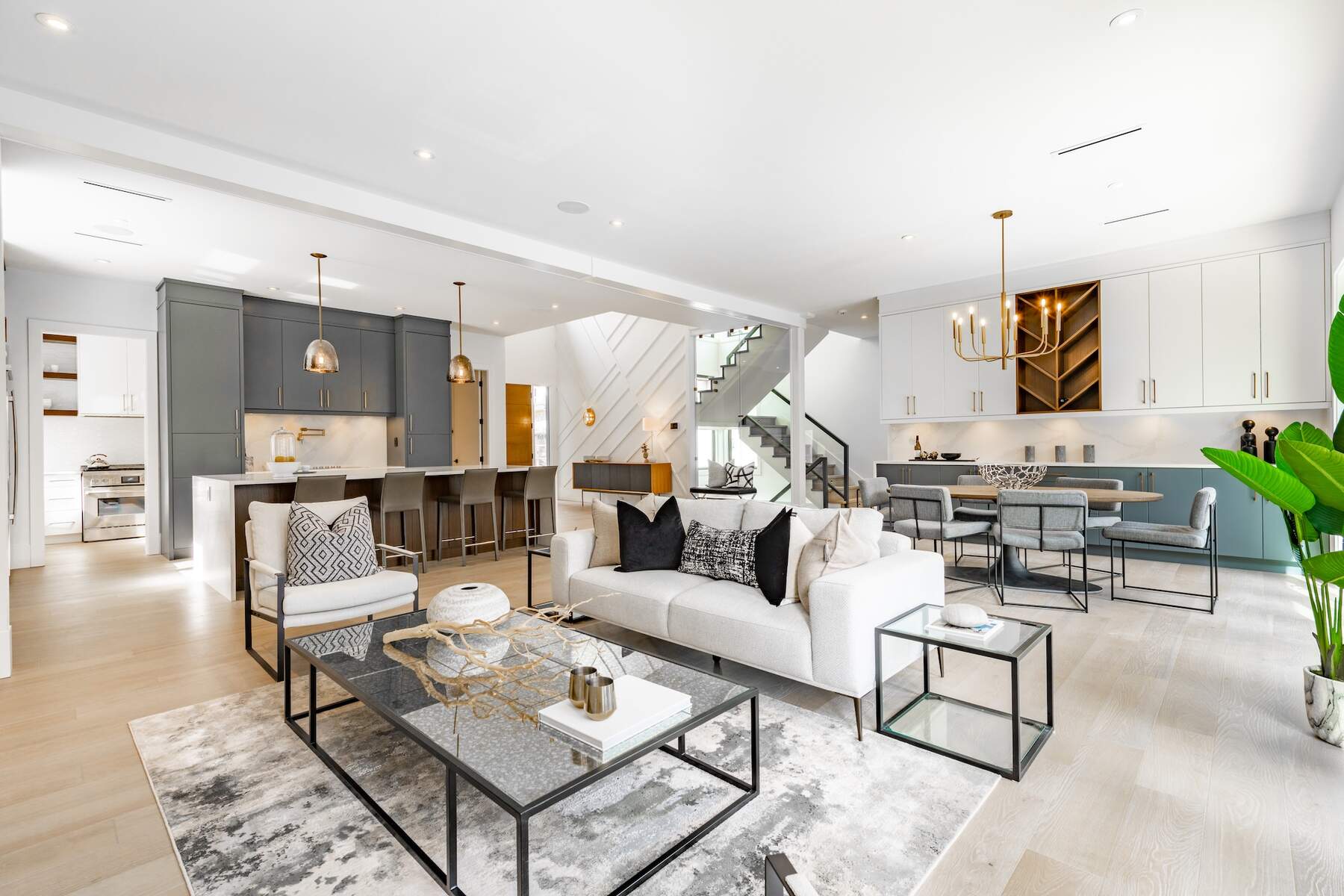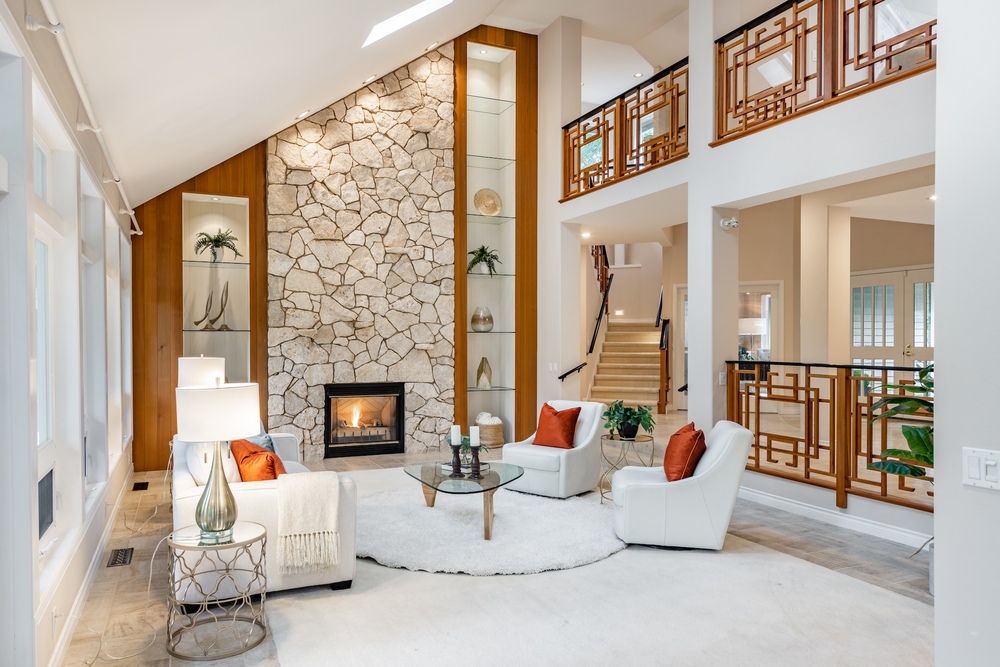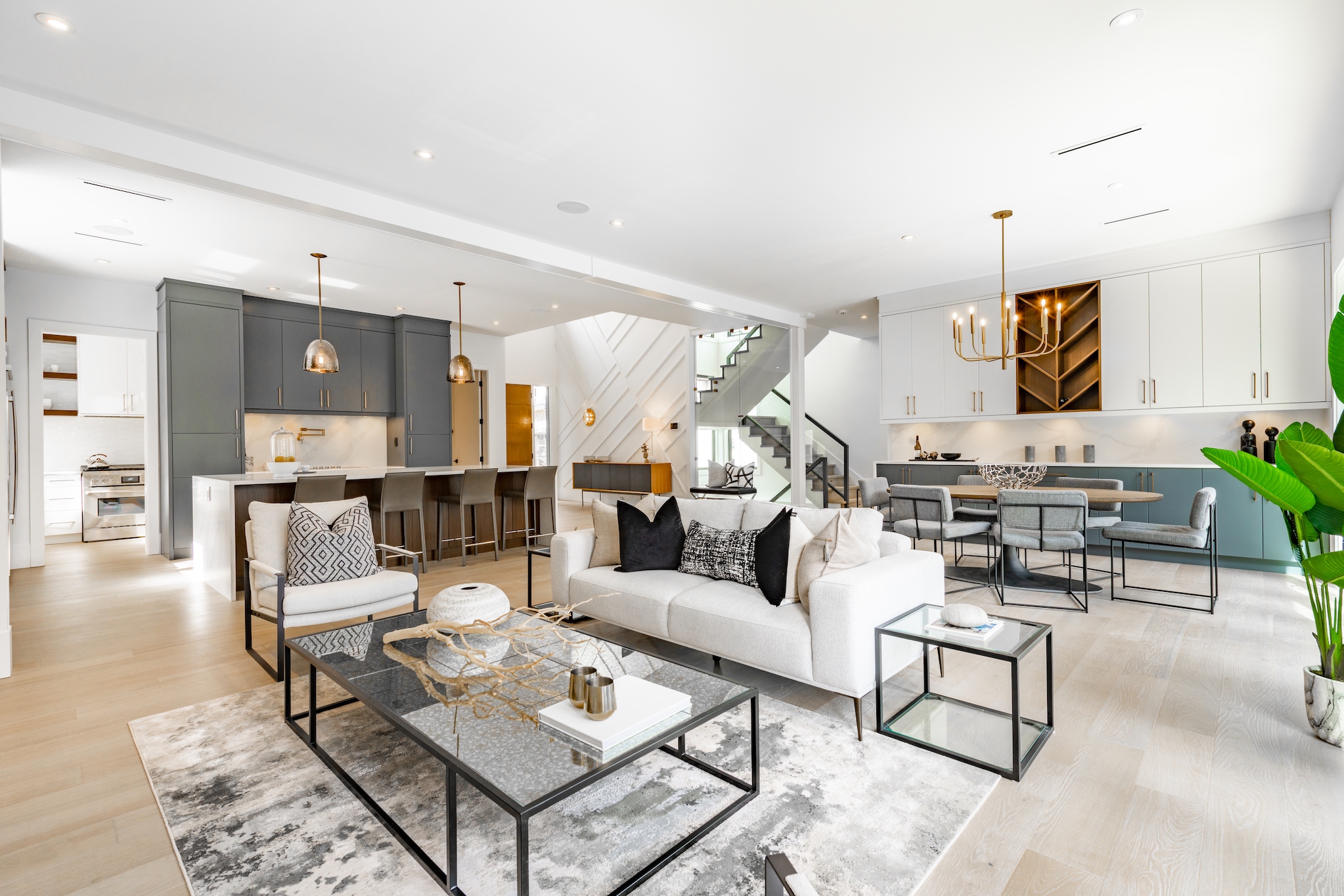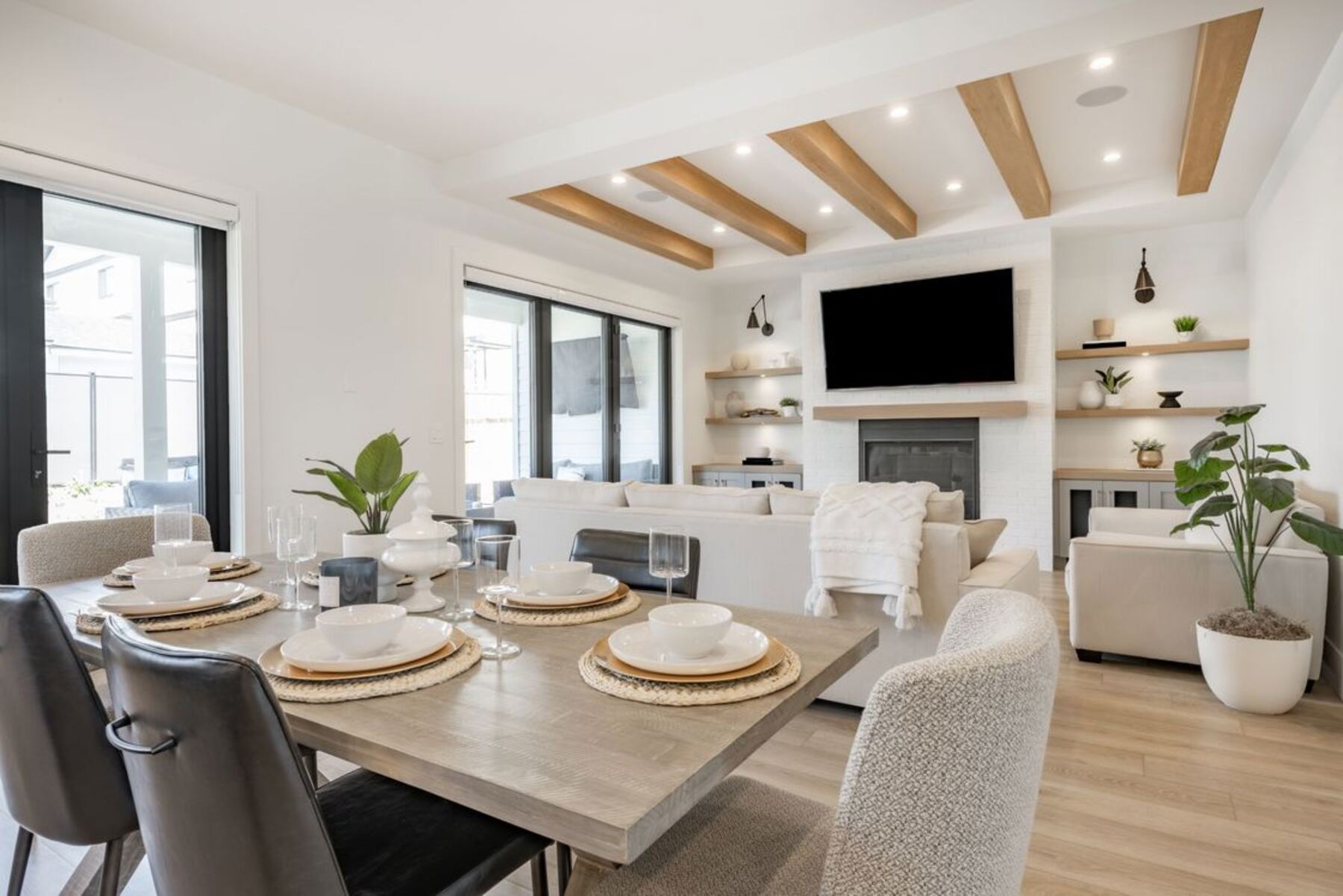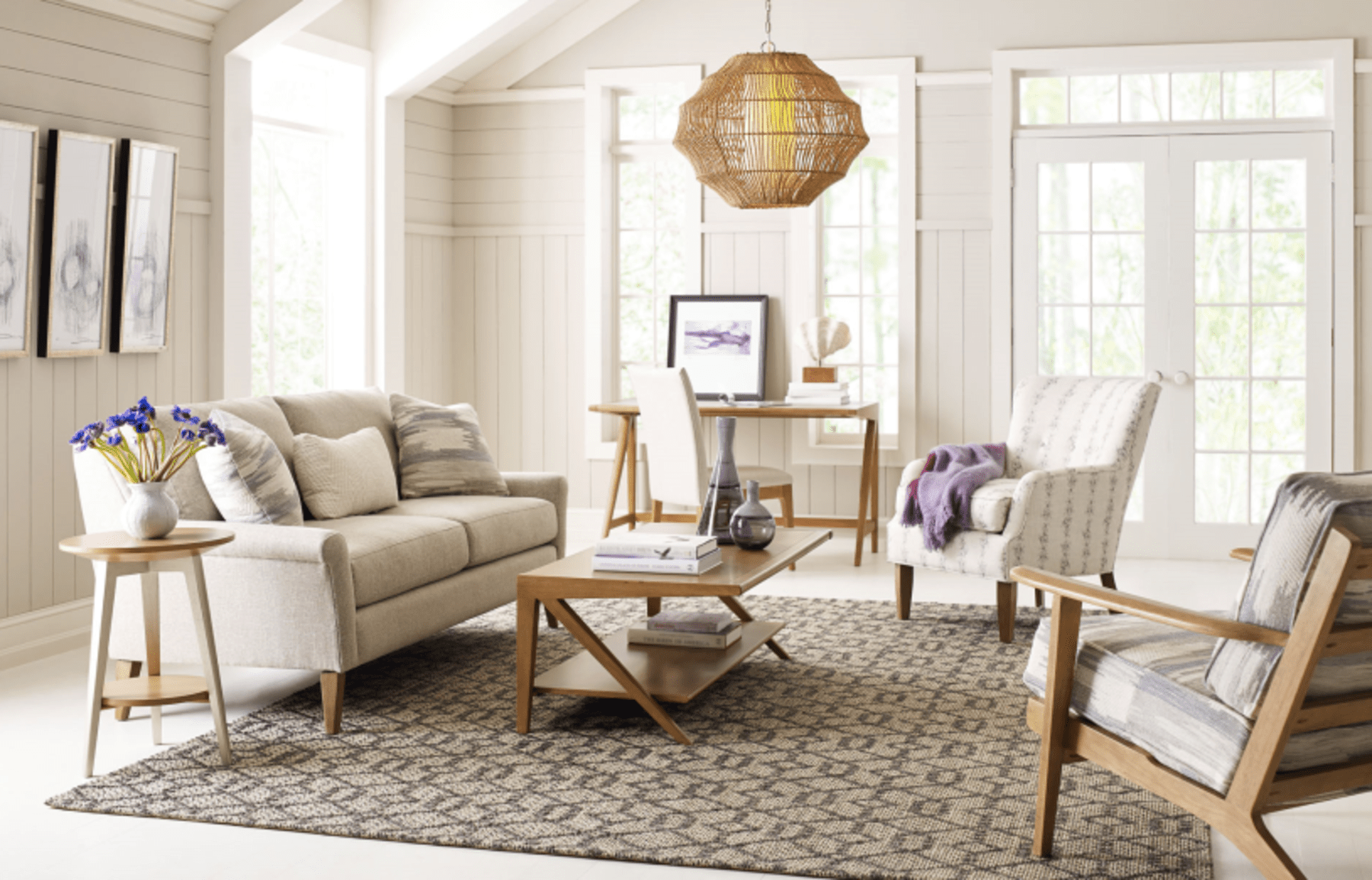Every day, I’m captivated by the world of Vancouver home decor, whether through web articles or glossy magazines. The allure lies in uncovering the artistry of beautiful living spaces. Some of us craft our domestic dreams, while others rely on skilled professionals.
What truly defines ‘interior design’? What makes it unique? Does interior design include furniture? Let’s explore.
Does Interior Design Include Furniture?
Furniture is a cornerstone of interior design, so it is included in the process. It is the first F in the FFE in interior design, which means Furniture, Fixtures, and Equipment. You can’t overlook the significance of stylish and unique furniture when aiming for originality and innovation in residential design services. As an interior designer, I aim to craft distinct styles for each room, and furniture is my versatile canvas.
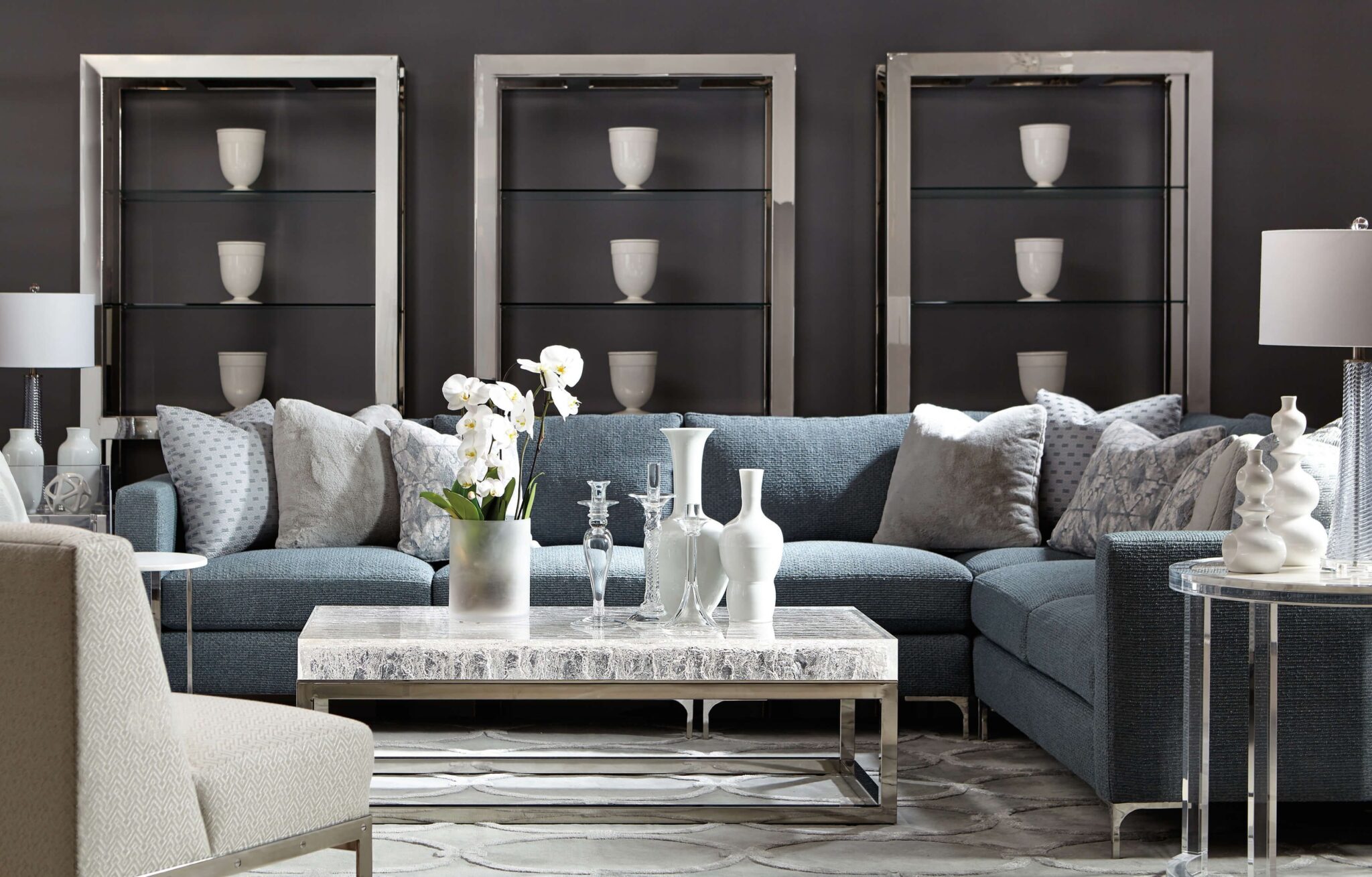
The creative and functional arrangement of furniture is often what defines a remarkable interior design. It becomes the focal point around which all other elements revolve, giving birth to a designer’s signature touch. In this way, furniture is one of the primary tools in my interior design toolbox.
Does Furniture Establish a Structured Framework?
I often observe that many accomplished interior designers employ furniture to establish a structured framework for the open spaces within a room. The skillful arrangement of furniture pieces imparts a sense of balance and cohesion to these spaces. Furniture also plays an important role in complementing the different interior decorating principles.
Moreover, it has a remarkable ability to enhance the aesthetics of even those areas deliberately left unutilized while simultaneously fostering a sense of airiness and cohesiveness throughout the room.
In essence, does interior design include furniture as a foundational element, allowing designers to unleash creativity while maintaining functionality and appropriateness for the intended purpose of the space? Yes – furniture is the foundational framework of any room’s design.
Furniture’s Key Role in Interior Design
The role of furniture in interior design is incredibly vast, offering many choices. It’s the designer’s role to carefully select the pieces that best suit their client’s needs. This process involves considering both style and functionality to achieve the desired ambiance and functionality within a room.
Let’s explore the key roles of furniture in interior design.
Turns a House into a Warm and Welcoming Home
I’ve had the chance to step into newly built or vacant residential properties, and the absence of furniture leaves a profound impression. Without it, a house stands as a mere lifeless shell. This is one of the interior design problems I need to solve.
When you introduce furniture, it breathes life into the space, adding color, texture, style, and a sense of vitality. This transformation indeed turns a house into a welcoming and comfortable home.
Determines the Visual Appearance of a Space
When it comes to defining the ambiance of a room, there’s an array of styles to choose from, ranging from traditional to ultra-modern. Even if you’re not a design enthusiast, you likely envision how you want a room to look and feel.
Bringing your vision to reality necessitates selecting the perfect furniture pieces that seamlessly match your intended result.
It’s these furniture choices that play a pivotal role in making my vision a reality, and they have a profound impact on the overall character of the space.
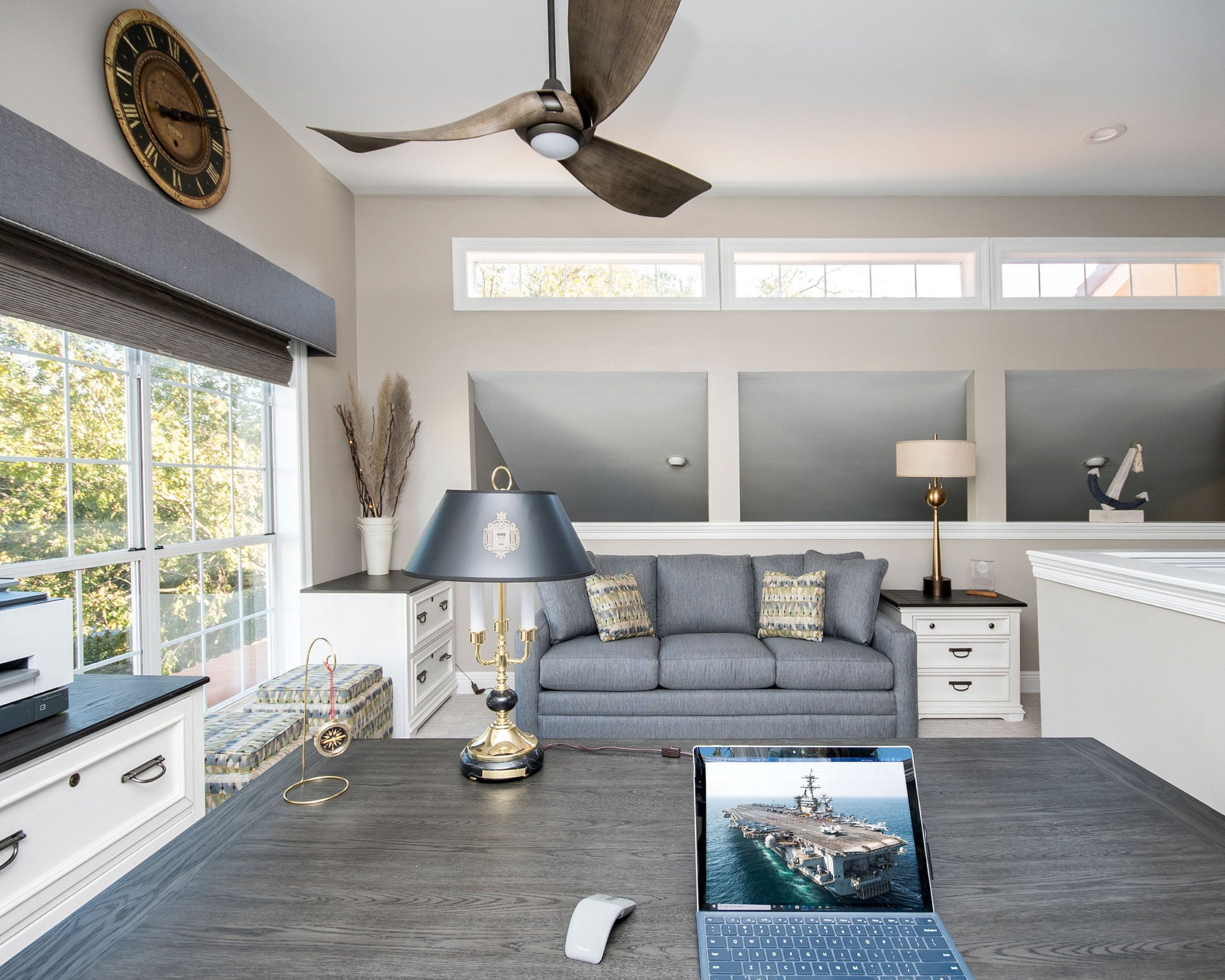
Influences a Room’s Overall Functionality
For me, furniture holds a pivotal role in influencing the dynamics of a space, making it a vital component of interior design. It determines how people navigate within a room and access its essential features based on its size and placement.
Furthermore, specific furniture pieces often set the layout and arrangement of the space. Take, for instance, the impact of an oversized sectional in a small family room.
In addition to its design and arrangement, furniture should always serve a functional purpose. How a particular piece works in a space largely depends on the unique needs and preferences of the individuals who inhabit it.
The Benefits of Furniture Selection in Interior Design
Working with an interior designer has been a better option for me. Here are the three standout perks of their furniture selection expertise:
First, they’ve got the know-how to pick the right-sized furniture, something people often need help with. Their ability to visualize a space and its potential is a real asset.
Second, they’re design pros. Instead of a mishmash of styles and colors, they create a seamless, stylish look everyone loves.
Lastly, their network of contacts means they find quality, budget-friendly pieces, and unique statement items that turn heads. All in all, furniture selection with an interior designer has been a smart move for me.
Furniture as Functional Elements
For me, furniture is the functional element of interior design, influencing the flow, function, and style of my living spaces. It goes beyond mere utility; it’s the essence of transforming a house into a cozy home. Furniture brings both beauty and purpose, enhancing the functionality of my space and adding character.
I select each piece thoughtfully, ensuring they fit seamlessly into my space planning and circulation. It’s my way of achieving visual balance and expressing my unique style. In my world of interior design, furniture isn’t just decor; it’s the heart and soul of a well-curated home.
Why Interior Professionals are Embracing Custom Furniture Designs
Furniture significantly impacts a space’s style, layout, balance, and aesthetics. That’s why experienced designers invest so much time and effort in selecting the right pieces.
However, for me, it’s crucial to create a space that truly reflects my personality and style. And that’s where custom-designed furniture comes in. Here are some key reasons why experienced professionals and I frequently opt for custom pieces:
- A diverse selection of luxurious fabrics in a myriad of colors, textures, and types to complement any space, style, or occasion
- The capacity to customize a piece to fit even the most challenging spaces, be it a compact room, an unconventional floor plan, or any other design constraints
- Uncompromising quality, guaranteeing that both the construction and visual design of the piece meet the most exacting standards
- An end result that’s as distinctive as the homeowner, ensuring a space that is truly one-of-a-kind
Custom-designed furniture goes a long way in creating a space that’s not only functional but also an authentic reflection of one’s style and taste.

Furniture Selection and Placement Guide
Furniture is special in any space, blending function and style seamlessly. With countless choices available, making the right selection for both utility and aesthetics can be a challenge. Allow me to share my tips on selecting and arranging furniture, drawing on my experiences to create a space I love.
Defining the Room’s Purpose
The initial step is to identify the room’s purpose. Is it a cozy living room, a comfortable bedroom, a formal dining area, or a productive home office? Understanding the room’s role helps me make furniture choices that perfectly align with its needs.
Layout and Style Considerations
I measure the room and consider its layout next. The chosen furniture must fit well within the room, leaving ample space for free movement. Additionally, I consider the furniture’s shape and size about the room’s design and style, ensuring that everything complements each other.
Some other factors are:
- Room layout, windows, and doors impact my furniture choices. I ensure functional arrangements and flow
- My furniture reflects the room’s style and ambiance, whether contemporary, traditional, modern, or eclectic
- Comfort is critical, especially for frequently used items like sofas and beds
- Material, color, and texture details are vital for the room’s appearance
- Thoughtful furniture placement maximizes space use and natural light
- Mixing styles and quality pieces create an eclectic, enduring appeal
- Ample storage solutions maintain organization and reduce clutter
- The furniture scale matches the room’s size and elements for harmony
- Accessories like pillows, rugs, and lighting enhance the atmosphere
- Future-proof selections adapt to evolving needs and styles
- Ergonomics and comfort are essential in furniture choices
- Patient selection ensures quality and appeal
- Functionality and style coexist in my furniture
- Eco-friendly, sustainable materials reduce my carbon footprint
- Color sets the room’s mood and complements existing elements
What Services are Offered in Interior Design?
Interior design encompasses more than just furniture. It includes an array of services that transform your living space into a reflection of your style and personality.
- Paint Color Selection: Interior designers analyze your room’s unique features to provide personalized paint color recommendations, harmonizing with lighting and layout
- Enhancing Living Space: Design choices like floor plans and flooring selection play vital roles. They optimize your space, and the right flooring and rugs can completely transform a room’s ambiance
- Lighting Additions: Interior designers can introduce table and floor lamps to enhance illumination, seamlessly complementing your decor style
- Art & Accessories: These elements add a personal touch, reflecting your individual style and enhancing your home’s character. The right art and accessories make your mark on your space

Related Questions
Here are some additional questions about furniture and interior design I want to address.
Is Interior Design the Same as Furniture?
While interior design and furniture go hand-in-hand, they are not the same thing. Furniture is an element used in interior design to create a cohesive space, reflective of your personal style and aesthetic.
Do You Design Furniture in Interior Design?
Typically, a furniture designer is responsible for creating furniture. However, interior designers can work with furniture designers to create custom pieces.
Conclusion
Furniture plays a pivotal role in interior design, shaping a space’s style, layout, and function. Selecting and arranging furniture requires careful consideration of room purpose, layout, style, comfort, and more. This process brings the essence of interior design to life, creating functional and aesthetically pleasing living spaces.



